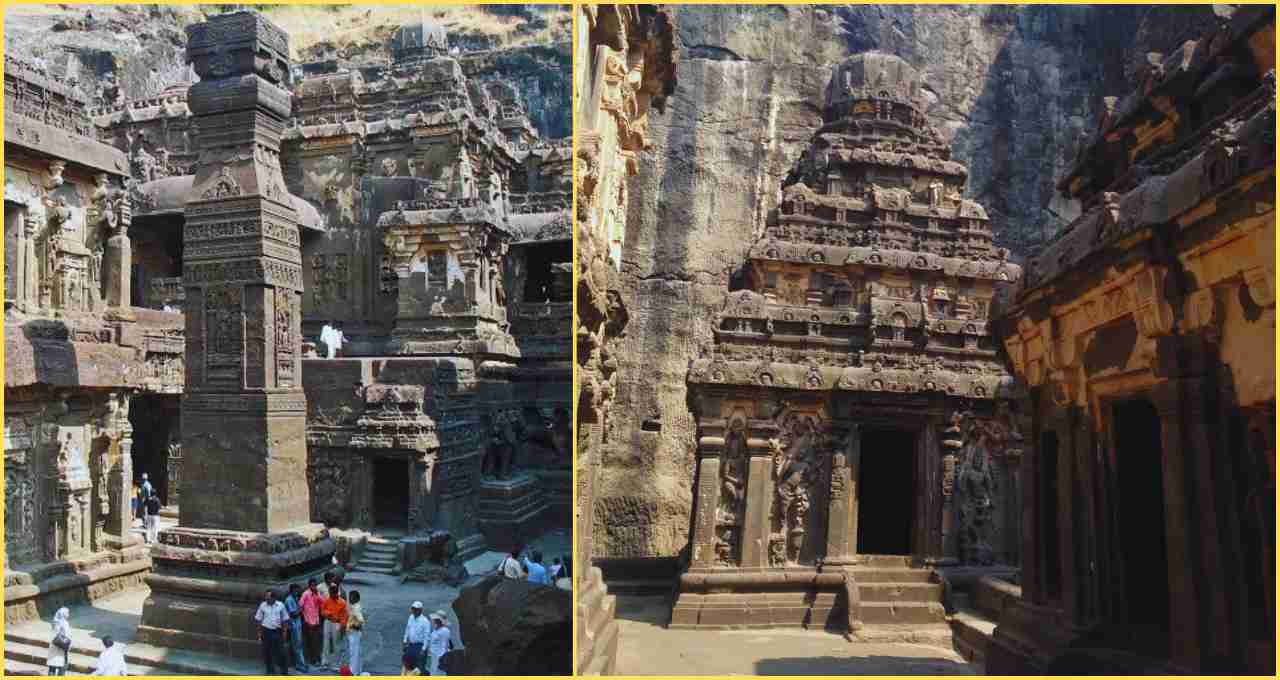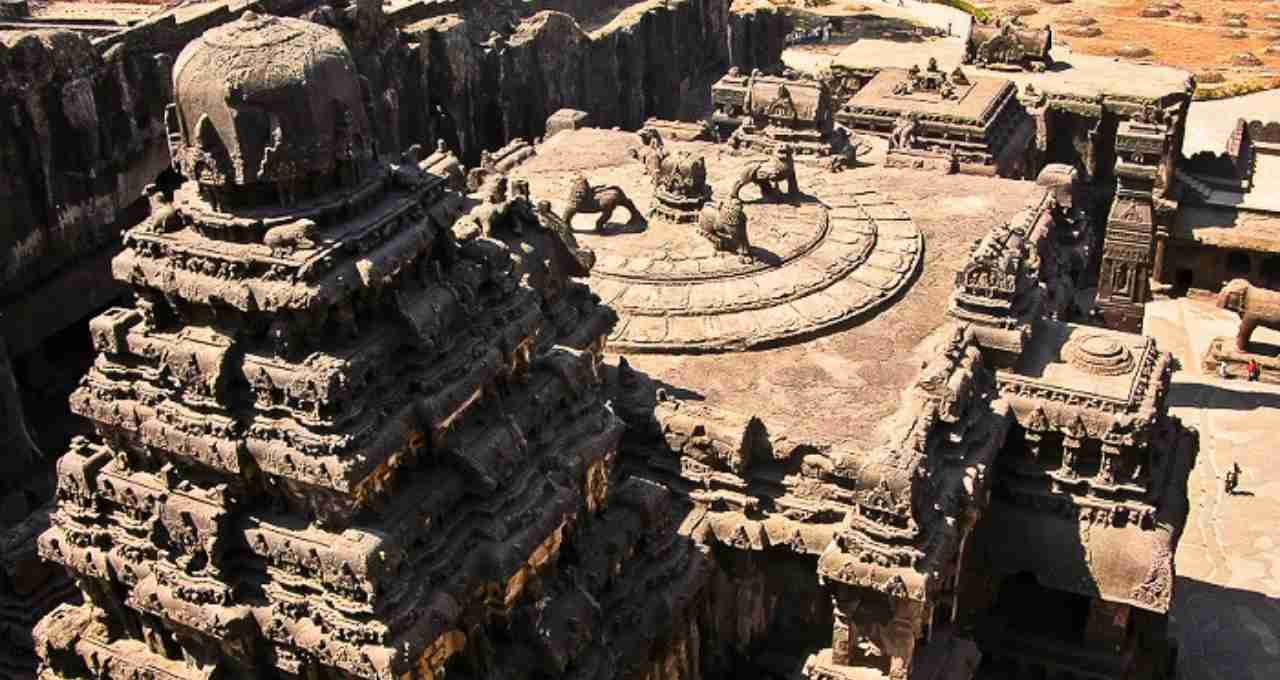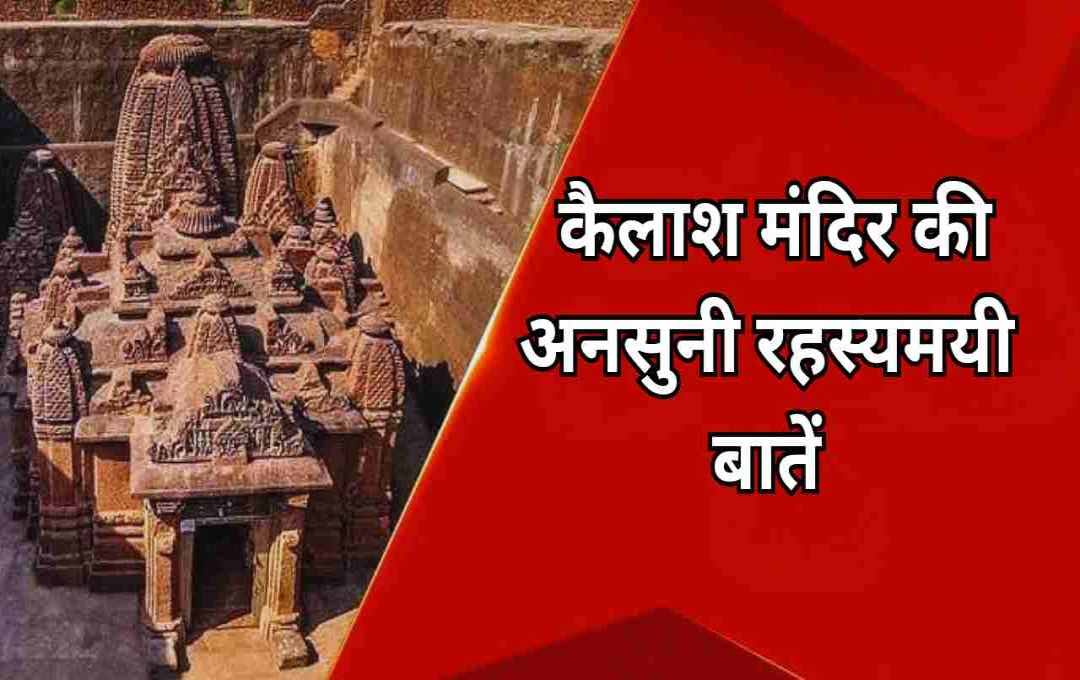India's land is not only steeped in spirituality but also boasts architecture considered unique worldwide. Among these architectural marvels is the Kailasa Temple, located in the Ellora Caves of Maharashtra. This temple wasn't built through conventional methods; instead, it was carved from a single, massive rock, sculpted from top to bottom. This fact has elevated it to the status of a mysterious and extraordinary temple globally.
Where is this astonishing temple located?
The Kailasa Temple is situated in Aurangabad district, Maharashtra state, forming part of the renowned Ellora Caves. Located within Cave 16, it holds particular religious significance for Hindu devotees of Shiva. The Ellora Caves are a UNESCO World Heritage Site, and the Kailasa Temple receives special recognition for its artistry and craftsmanship.
A Temple Crafted from a Single Rock
The temple's most unique feature is its construction without cement, lime, or reinforcement; it's carved entirely from a single, massive rock. The entire structure is made of basalt, a hard rock notoriously difficult to carve. Approximately 1200 years old, it was commissioned by Krishna I (757–783 CE), the king of the Rashtrakuta dynasty.
How was it constructed?

Buildings are typically constructed from the ground up. The Kailasa Temple, however, was built in reverse – from top to bottom. Using this unique technique, artisans carved the rock downwards from the mountaintop, creating the entire temple structure.
According to historians and archaeologists, approximately 200,000 tons of rock were removed to create this temple – all without machines, relying solely on chisels and hammers.
18 Years of Construction
Historians estimate that the Kailasa Temple took roughly 18 years to complete. This was no ordinary construction project; it was carved from a single rock, top to bottom. Its depth, width, and intricate carvings illustrate the immense effort, dedication, and skill of the artisans involved. Building such a massive temple using only hand tools and without any machinery is an architectural miracle.
Art depicting the Ramayana and Mahabharata
The Kailasa Temple is not only a stunning example of architectural prowess but also a representation of India's religious and cultural heritage. The walls and pillars are adorned with beautifully carved narratives from ancient epics like the Ramayana and Mahabharata. The detail and artistry in each depiction bring the stories to life in stone, captivating devotees and history enthusiasts alike for hours and underscoring the richness of ancient Indian culture.
Structure and Grandeur of the Temple

The Kailasa Temple's design is so beautiful and grand that it leaves everyone awestruck. The interior and exterior walls are adorned with incredibly fine and exquisite carvings. It features a main sanctum sanctorum for Shiva, where worship takes place, along with a large assembly hall and a Nandi mandapa (Nandi pavilion). The temple courtyard is vast, and its roof is topped with an ornate kalasha (pot). Notably, stairs lead down from the temple's height to the Shiva lingam, highlighting its spiritual and religious importance.
A Center of Spirituality and Energy
The Kailasa Temple is more than just a historical and architectural structure; it's also a center of energy and faith. Devotees report experiencing a sense of divine tranquility when meditating before the Shiva lingam in the sanctum sanctorum. The temple is seen as a meeting place of spiritual purity and cosmic energy.
Why is this temple so special?
- It is the world's only Shiva temple entirely carved from a single rock.
- It features no joins or pieced-together elements, resulting in a completely integrated and robust structure.
- Its construction did not utilize any modern technology, yet it challenges modern engineering.
- This temple is a remarkable confluence of spirituality, art, and science.
The Kailasa Temple serves as an inspiration not only for India but for the entire world. It stands as testament to our ancient culture, craftsmanship, and profound faith. This temple demonstrates the advanced thinking of Indian artisans and architects, showcasing miraculous feats accomplished millennia ago, seemingly impossible even in today's technological age.















